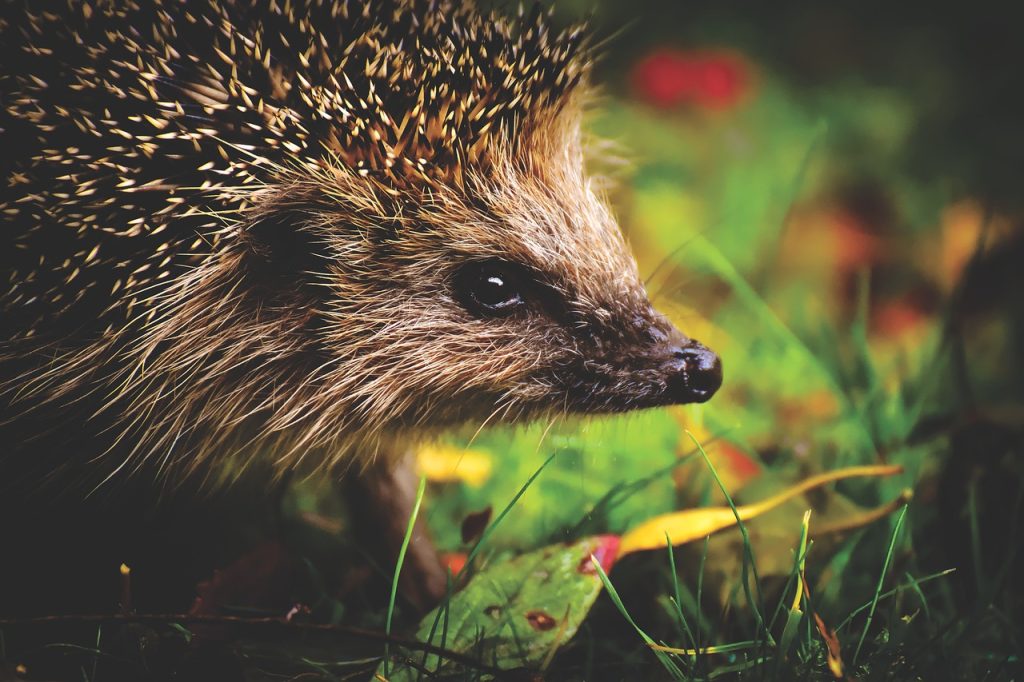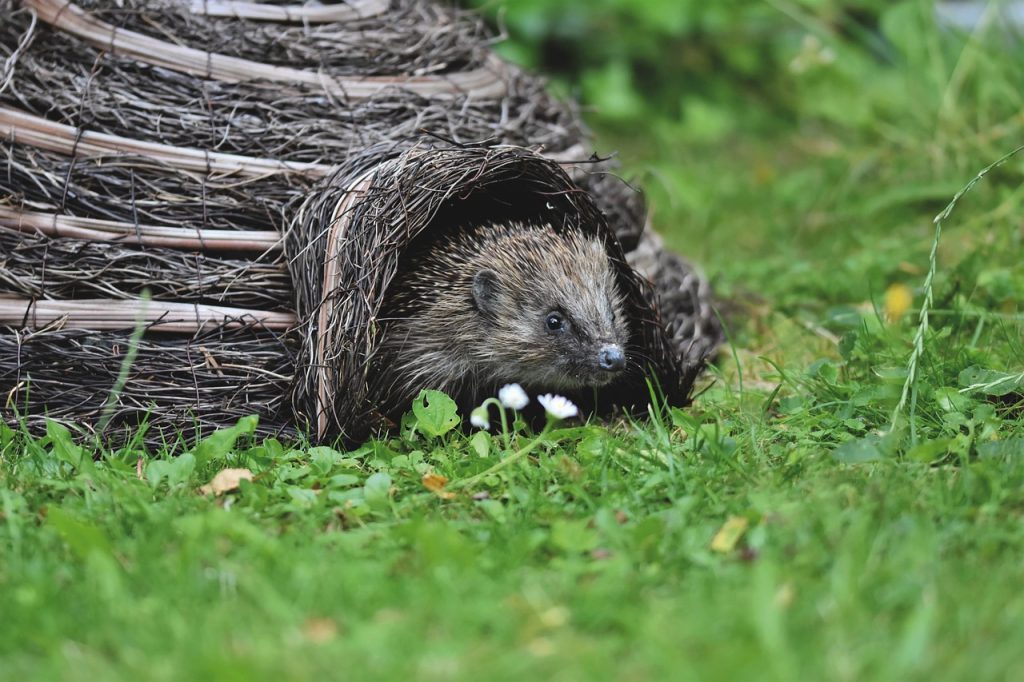Welcome, nature enthusiasts! Today, we’re diving into the adorable world of hedgehogs in Britain and Ireland and exploring some creative ways that we can help hedgehogs in our gardens and allotments. As we all know hedgehog numbers have been plummeting for years. From their charming nocturnal antics to their crucial role in garden ecosystems, hedgehogs are true treasures of the countryside. Let’s learn how we can ensure their survival and what steps we can take in our gardens and allotments.
This post contains affiliate links, which means Barefoot Bliss and Books make a small commission at no extra cost to you. See the full disclosure here.

Hedgehog Awareness Week
Hedgehog Awareness Week is a special time dedicated to raising awareness about the plight of hedgehogs and promoting efforts to conserve and protect these beloved creatures. It was launched by the British Hedgehog Preservation Society (BHPS) and is now organised by various wildlife organisations and enthusiasts across the UK. Hedgehog Awareness Week typically occurs in May, coinciding with the period when hedgehogs emerge from hibernation and begin their breeding season. This year it will run from 1st to the 7th of May 2024. During this week, activities such as educational workshops, community events, and fundraising campaigns are organised to highlight the importance of hedgehog conservation and encourage individuals to take action to support hedgehog populations. From creating hedgehog-friendly habitats to spreading awareness about hedgehog hazards like roads and garden chemicals, Hedgehog Awareness Week serves as a rallying point for hedgehog enthusiasts to come together and make a positive impact on the future of these iconic spiky mammals.
Understanding Hedgehogs: Britain’s Tiny Garden Guardians
Before we delve into how to help hedgehogs, let’s take a closer look at these fascinating creatures. Hedgehogs, with their endearing snuffles and distinctive spines, are small mammals native to Britain. There are 15 species of hedgehog in the world. The UK only has one native species, which is the European Hedgehog. They play a vital role in controlling insect populations, munching on pesky pests like slugs and snails, making them a gardener’s best friend. Despite their importance, hedgehog populations have been declining due to habitat loss, urban development, and other human-related factors.

Creating Hedgehog-Friendly Habitats: A Garden Makeover Guide
One of the best ways to help hedgehogs thrive is by transforming our gardens and allotments into hedgehog havens. Here are some tips to make your outdoor space more hedgehog-friendly:
- Hedgehog Highways: Install small holes or gaps in fences and barriers to allow hedgehogs to roam freely between gardens. These “hedgehog highways” create vital corridors for hedgehogs to forage and find mates.
- Wildlife-Friendly Landscaping: Opt for native plants, shrubs, and wildflowers in your garden to provide hedgehogs with food, shelter, and nesting sites. Avoid using pesticides and chemicals that can harm hedgehogs and their prey.
- Hedgehog Hideaways: Create cozy hiding spots and sheltered areas in your garden using piles of leaves, logs, and brushwood. Hedgehogs love to snuggle up in these natural hideaways during the day. Alternatively, purchase a predator safe Hedgehog Home.
Hedgehog Hospitality: Feeding and Watering Tips
Another way to support hedgehogs is by providing them with food and water. Here’s how you can be a gracious host to your spiky visitors:
- Hedgehog Buffet: Set out a shallow dish of fresh water and a selection of hedgehog-friendly foods, such as wet cat or dog food, cat biscuits or specially-made hedgehog food. Avoid offering bread and milk, as these can upset hedgehog stomachs.
- Feeding Stations: Create designated feeding areas in your garden away from potential hazards like roads and predators. Keep food and water dishes clean and replenished regularly to attract hungry hedgehogs.
Activities to Help Children Help Hedgehogs
Children can engage in a variety of fun and educational activities to learn about and help hedgehogs. One exciting activity is creating hedgehog-friendly habitats in their own backyard by building hedgehog houses using simple materials like cardboard boxes or wooden crates filled with leaves and straw. Kids can also design and decorate hedgehog highways by crafting small tunnels or gaps in garden fences to allow hedgehogs to roam freely between gardens. Another hands-on activity is setting up feeding stations with shallow dishes of water and hedgehog-friendly foods like wet cat or dog food to provide nourishment for visiting hedgehogs. Children can also participate in hedgehog-themed arts and crafts projects, such as making hedgehog masks, clay sculptures, or paintings, to foster creativity while learning about hedgehog conservation. Additionally, involving children in community initiatives like fundraising events or litter clean-ups aimed at supporting hedgehog rescue organisations can instill a sense of environmental stewardship and empathy towards wildlife from a young age.
Further Reading and Research
Hedgehogs may be small in size, but they play a mighty role in Britain’s ecosystems. By following these tips and embracing a hedgehog-friendly lifestyle, we can ensure that these spiky wonders continue to enchant us with their presence for years to come. Let’s join forces to create a brighter future for hedgehogs and all creatures great and small. Happy hedgehog helping!


Lovely. I love hedgehogs. We see some occasionally at night. Hedgehog rescue centres say NEVER give hedgehogs milk. They are lactose intolerant. It kills them.